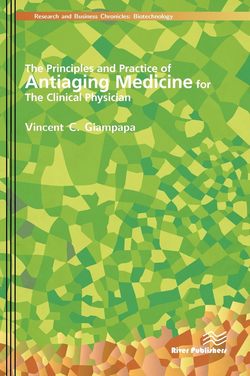Читать книгу The Principles and Practice of Antiaging Medicine for the Clinical Physician - Dr. Vincent C. Giampapa - Страница 22
На сайте Литреса книга снята с продажи.
3 Biomarkers of Aging Understanding Gene Expression
ОглавлениеVincent C. Giampapa, M.D., F.A.C.S.
Aristo Vojdani, Ph.D.
All disease is genetic.
Paul Boerg, Co-inventor of Genetic Engineering
The first question anti-aging physicians ask is “How can we measure our rate of aging and the success of our treatments for aging?” They are measured by what are called biomarkers.
A biomarker is a measurable chemical substance, or physiological valve, that is known to change during aging (Diagram III-1). Some of the more important clinical biomarkers that have been documented to improve quality of life, as well as appearance, are the endocrine biomarkers, such as dihydroepiandrosterone (DHEA), growth hormone (HGH) and testosterone levels1 (Diagram III-2). Both Dr. Vladimir Dilman and Dr. Ward Dean, in their book entitled Neuroendocrine Theory of Aging,2 have supported the importance of biomarkers.
Another important concept is gene expression, the process that determines which genes are actively operating at a specific time because of factors present in their immediate environment. The final effects of genetic expression depend on a number of key factors that are unique for each individual (Diagram III-3).
Still another important concept is gene plasticity, the process that occurs when the combination of genetic potential with environmental factors results in the outcomes seen both in laboratory test results and in the physical body (Diagram III-4).
In addition to laboratory data, which document altered gene expression, subjective improvement is an integral part of an anti-aging, or age-management, evaluation. By recording the combination of both objective laboratory data and subjective data (the patient’s recognition of change), the utility and effectiveness of an anti-aging program can be validated with a high degree of scientific credibility.
